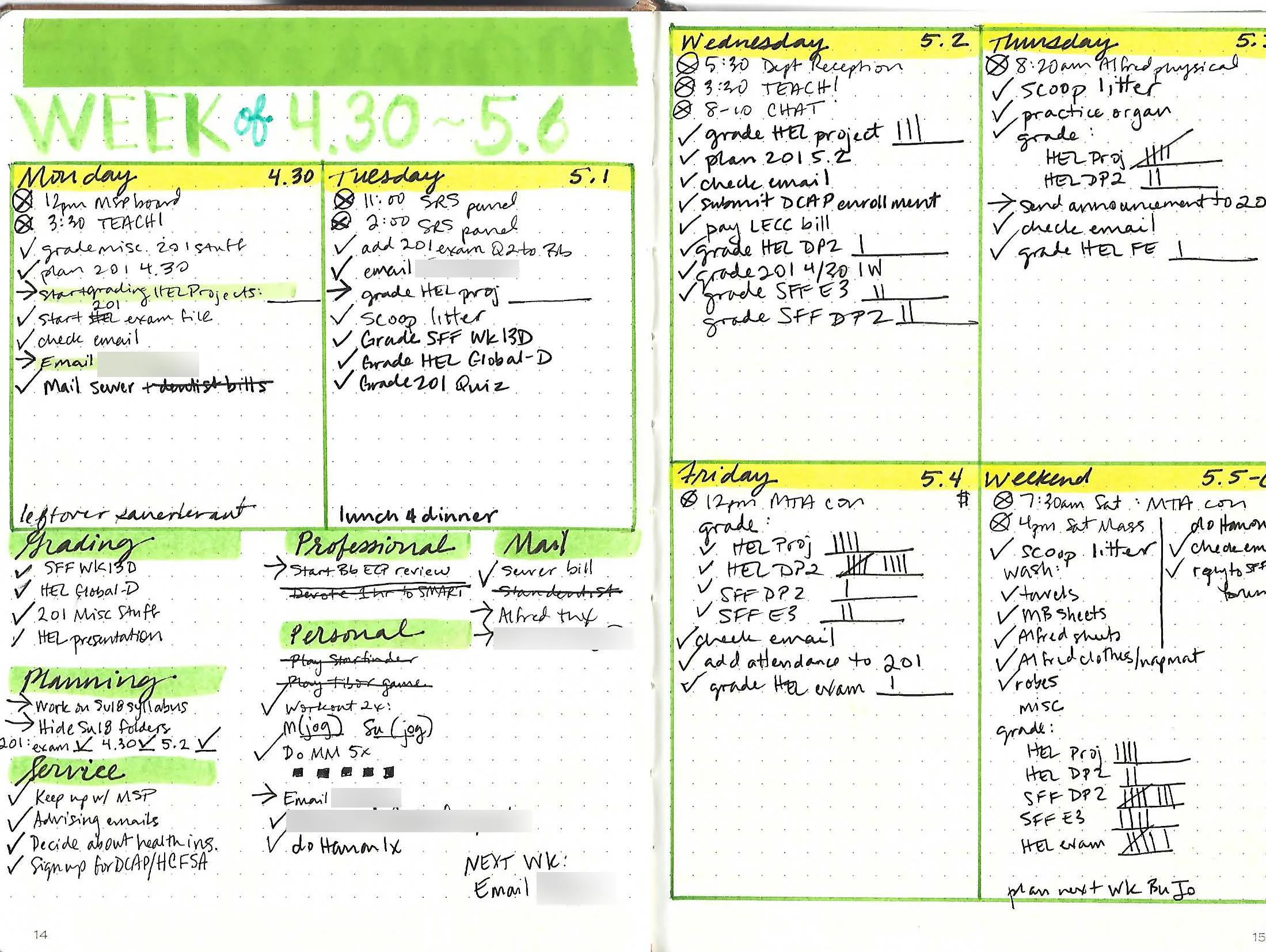Today, I’m talking about Teaching the Literature Survey Course: New Strategies for College Faculty, ed. Gywnn Dujardin, James M. Lang, and John A. Staunton. I can’t say enough good things about this book! Even if you don’t teach literature survey courses or you’re in an entirely different discipline, the assignments and approaches shared in Teaching the Literature Survey will spark your imagination. If you’ve ever started to plan a class and thought, “How can I possibly cover it all?” then this book is for you.
What I truly want to foster in my discussion forums above all is conversation. Portfolio grading is an important part of creating that conversational atmosphere. Students feel more empowered to experiment with ideas and approaches when every sentence isn’t being assessed. Moreover, portfolio grading encourages students to take ownership of their own participation.
As an academic, the week is the unit of time that governs my professional life. This post shares the combined daily/weekly spread that I use to organize my tasks and schedule in my Bullet Journal.
The biggest philosophical benefit of a student-created participation rubric is that it gives students a voice in setting the criteria on which they are evaluated. With standards that are generated by the group rather than imposed from above by the teacher, students may feel more invested in the class. In this post, see step-by-step examples for how to implement student-created participation rubrics.



